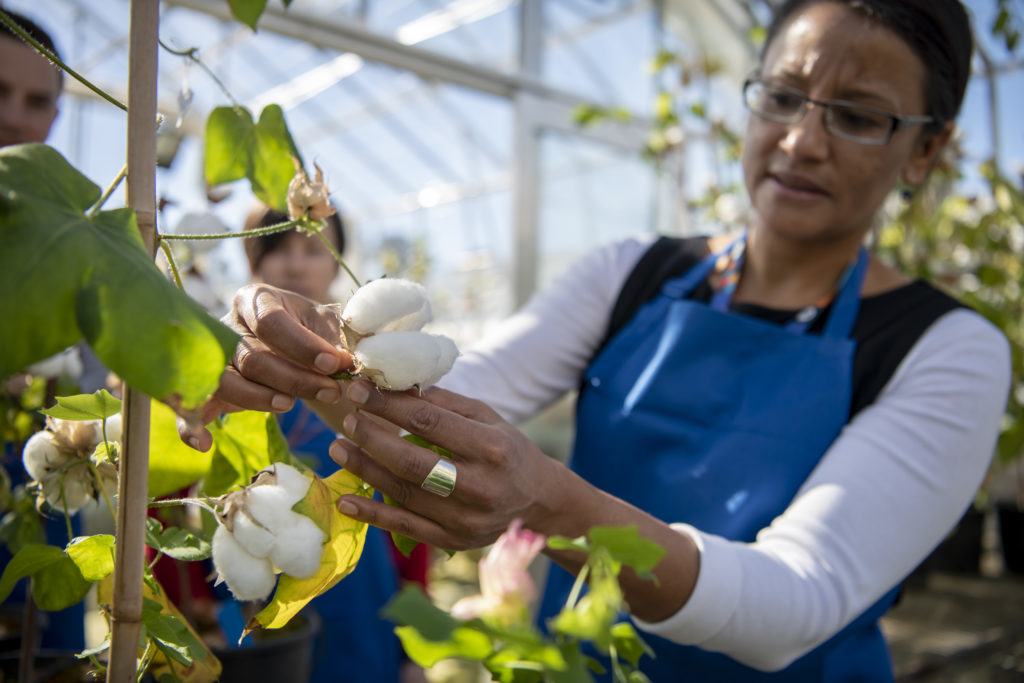
Imagine a shirt with the soft, natural feel of cotton but it doesn’t need to be ironed, or active wear that breathes and is not smelly.
Sure, there are lots of synthetic fibres that can do these things. They may be cheaper to produce and require less maintenance, but there is a major drawback: synthetics are made from petrochemicals and every time you wash them, tiny microfibers of material are pulled free and enter our waterways. These do not breakdown and can build up in the food chain.
When you wash cotton, fibres are also shed but these are biodegradable and will break down rapidly in the environment.
Why can’t we have both?
Our scientists, Dr Madeline Mitchell, Dr Filomena Pettolino and their colleagues are working on a consumer-friendly ‘next generation cotton’ that has benefits normally associated with synthetics like polyester and nylon.
Every cotton fibre is a single cell. Our scientists are working on better understanding what genes and external factors determine the length, strength and fineness of cotton fibres.In their quest to develop cotton fibres that are stretchy, non-creasing or even waterproof, the researchers are growing a wide range of different cotton plants. One of these is nicknamed ‘Shaun the Sheep’ because it has extremely short, dense fibres.
“We’re also identifying molecules that already exist in nature and seeing how we can put these into cotton cell walls to change the way cotton fibres behave,” explains Dr Mitchell.
There are some 100 per cent cotton products currently being sold as not requiring ironing but these tend to have been treated with chemicals to give them their special properties.
The next generation cotton research is part of our Synthetic Biology Future Science Platform, a $13 million investment in science that applies engineering principles to biology. SynBio projects aim to provide societal benefits and opportunities for a wide range of industries.
The research builds on more than 30 years of cotton breeding in partnership with Cotton Seed Distributors. Thanks to these efforts, Australian cotton is now considered among the best in the world and the most water efficient. Current cotton varieties use up to 85 per cent less pesticides and 60 per cent less herbicides than their predecessors.


20th April 2020 at 9:28 am
very very god knowledge of planting cotton nice information thank for sharing
18th April 2020 at 1:29 am
nice information of cotton harvesting
22nd January 2019 at 12:23 pm
I really appreciate your sharing. I learned a lot from your post and I highly recommend this article for you. http://www.testextextile.com/what-is-cotton-fiber-properties-of-cotton-fiber
Pingback: Bremen Cotton Exchange » Cotton: Non-creasing and „Shaun the Sheep“ Fibres
17th August 2018 at 4:43 pm
Love the concept. Also the iron vs non-iron debate needs to consider the way the textile is made. For example, a knitted textile generally does not require ironing as the knit allows the garment to relax. Another consideration may be the stretch or give of the textile. Many synthetics give the garment more stretch than straight cotton, e.g. stretch denim. It may be possible to create this stretch in cotton textiles by replacing the synthetic component with superfine wool, and use conventional cotton.